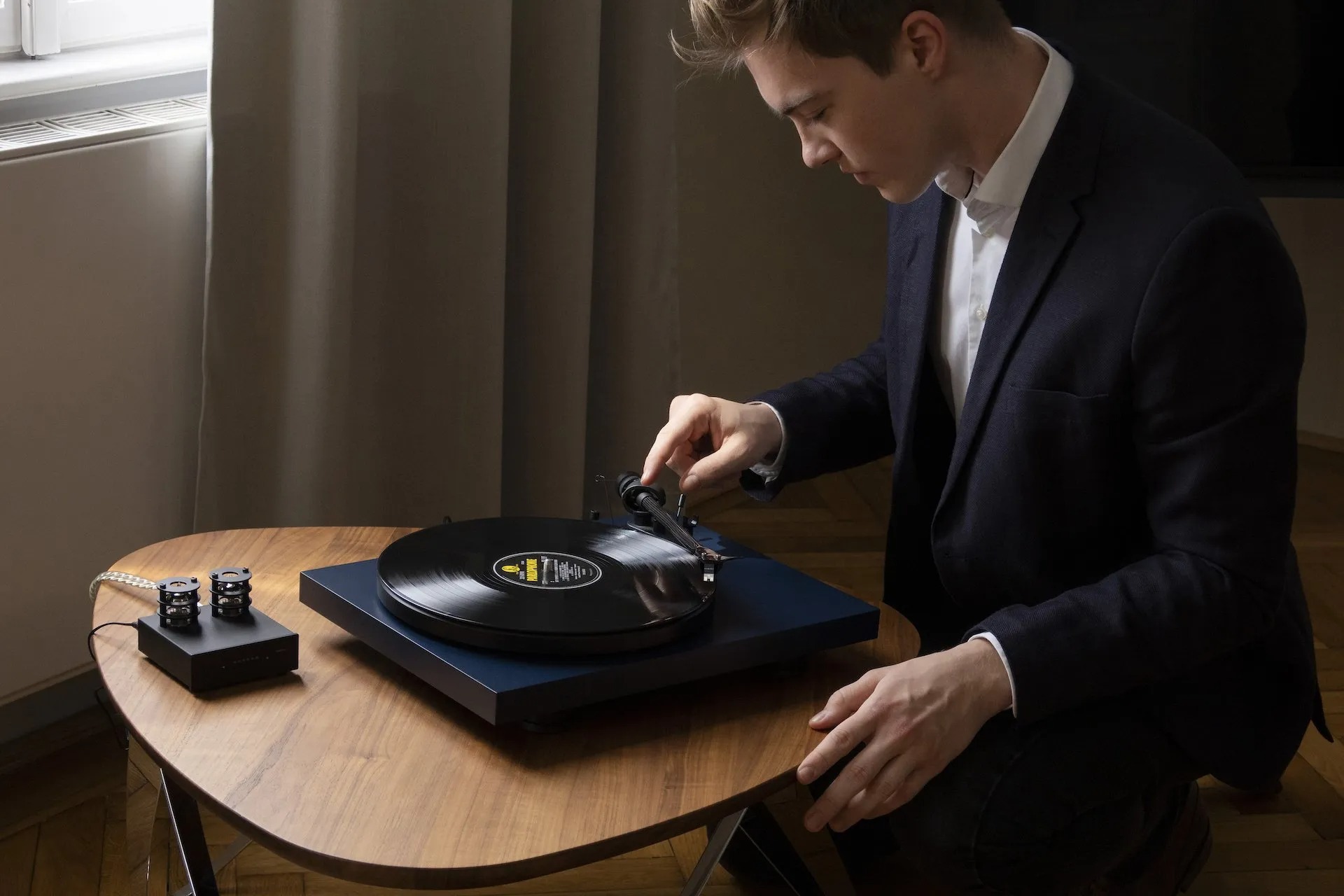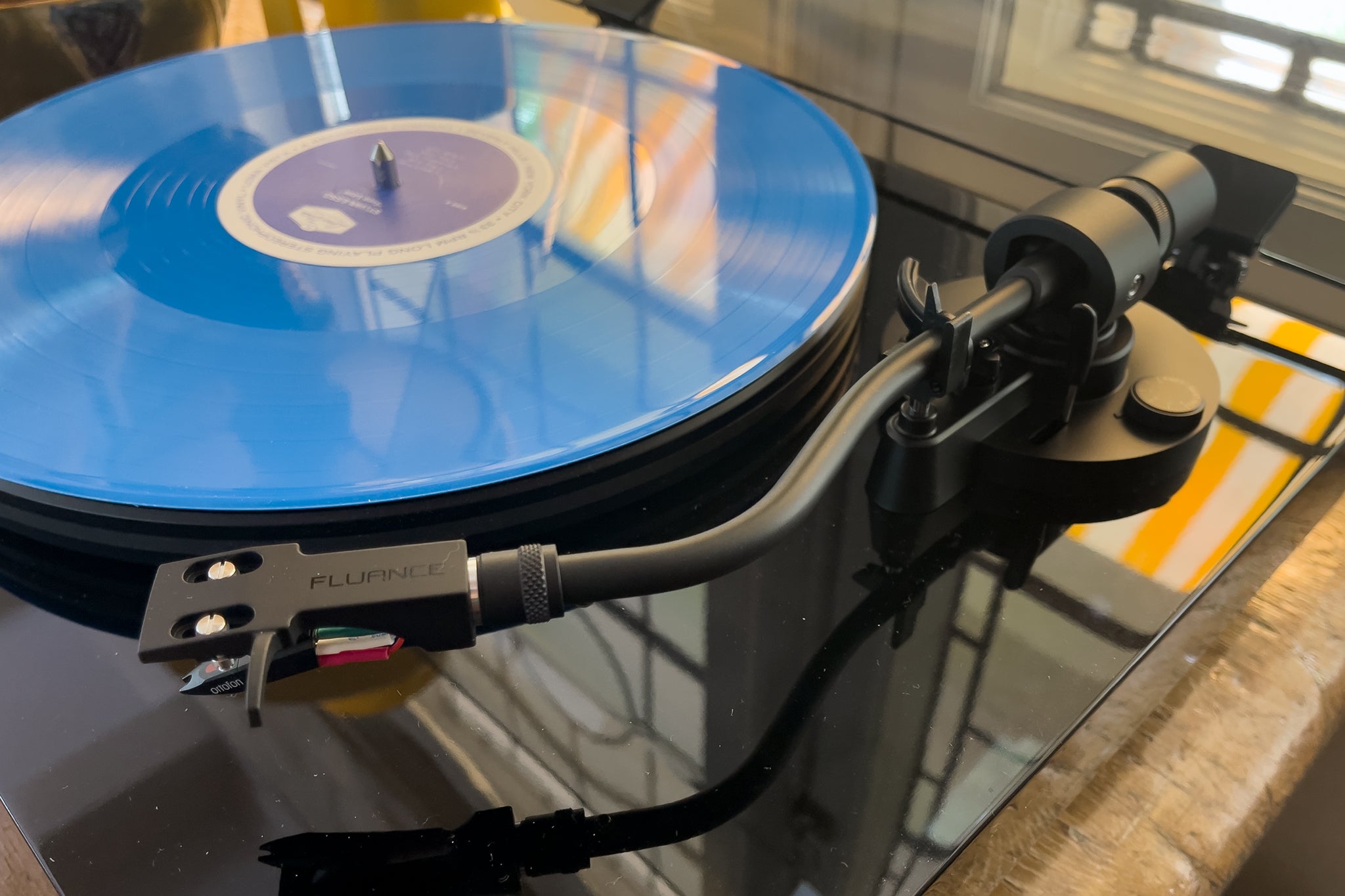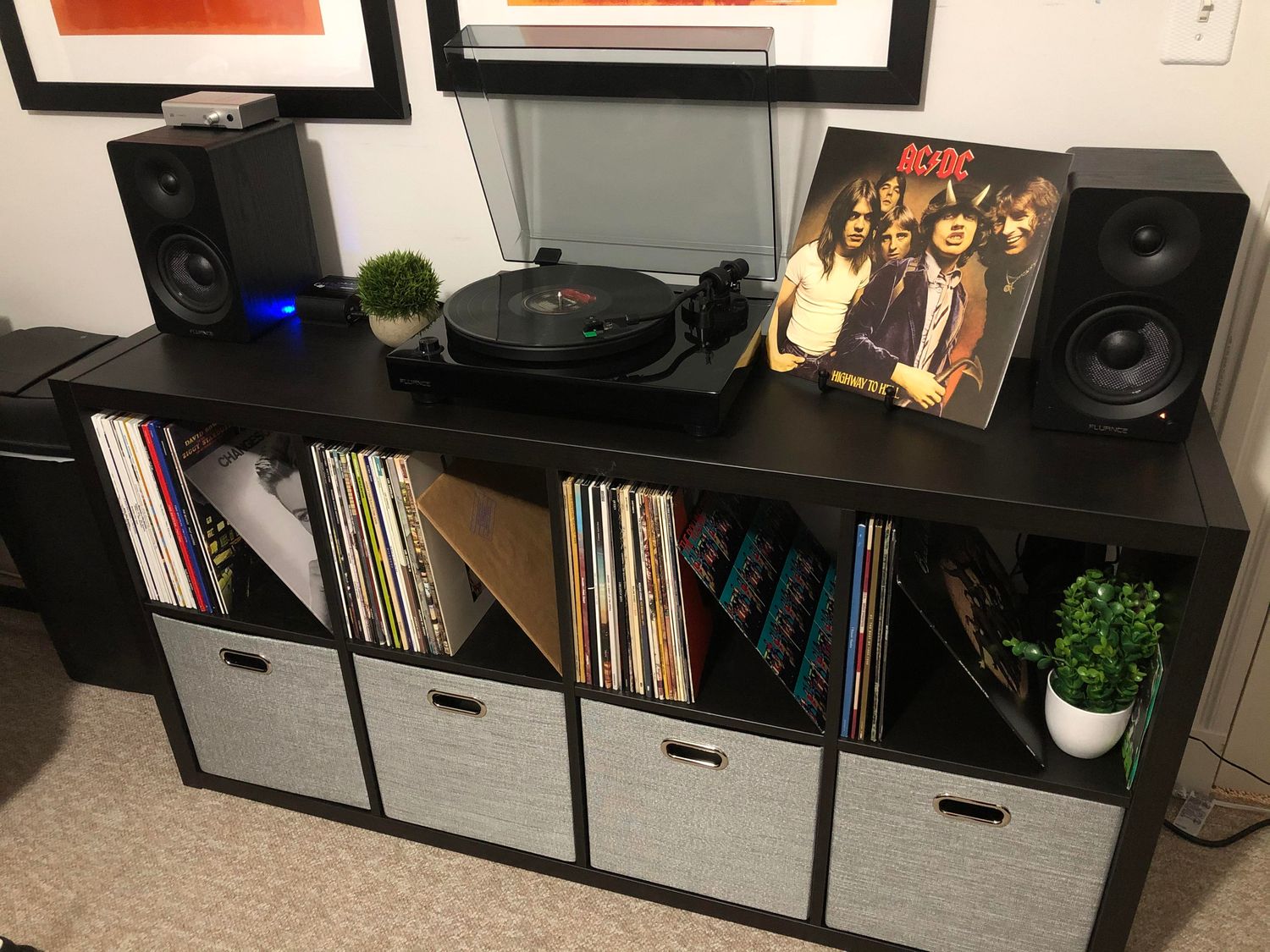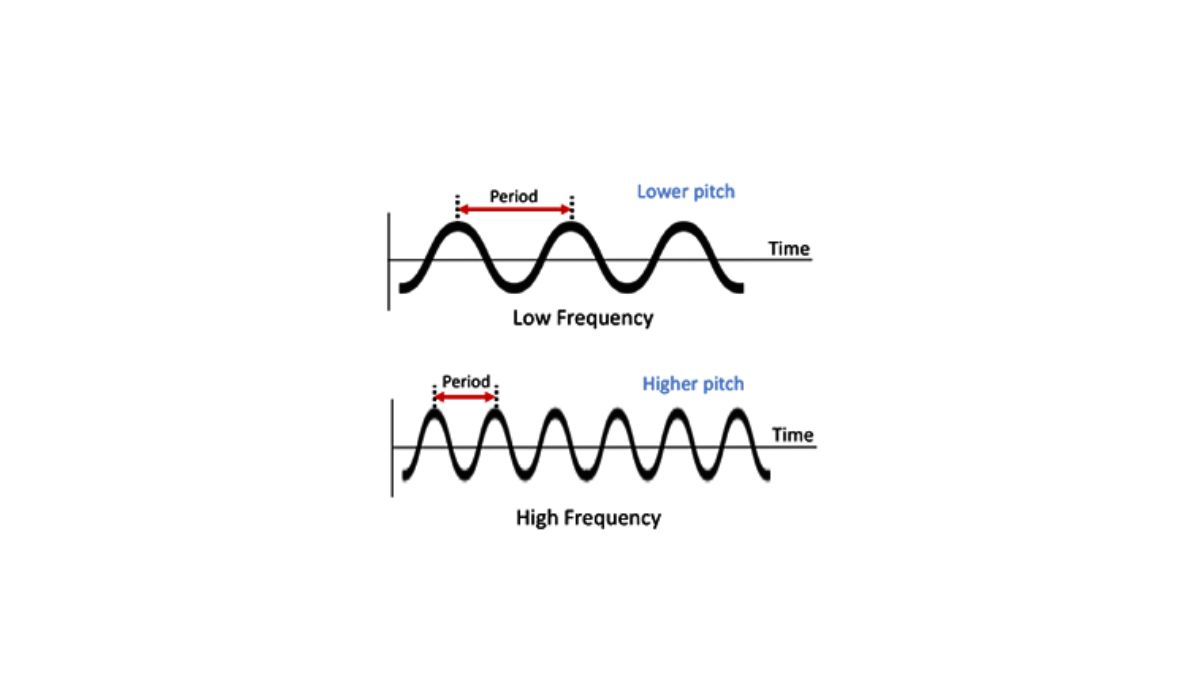Home>Devices & Equipment>Turntable>Turntable Pitch Control What Does It Do
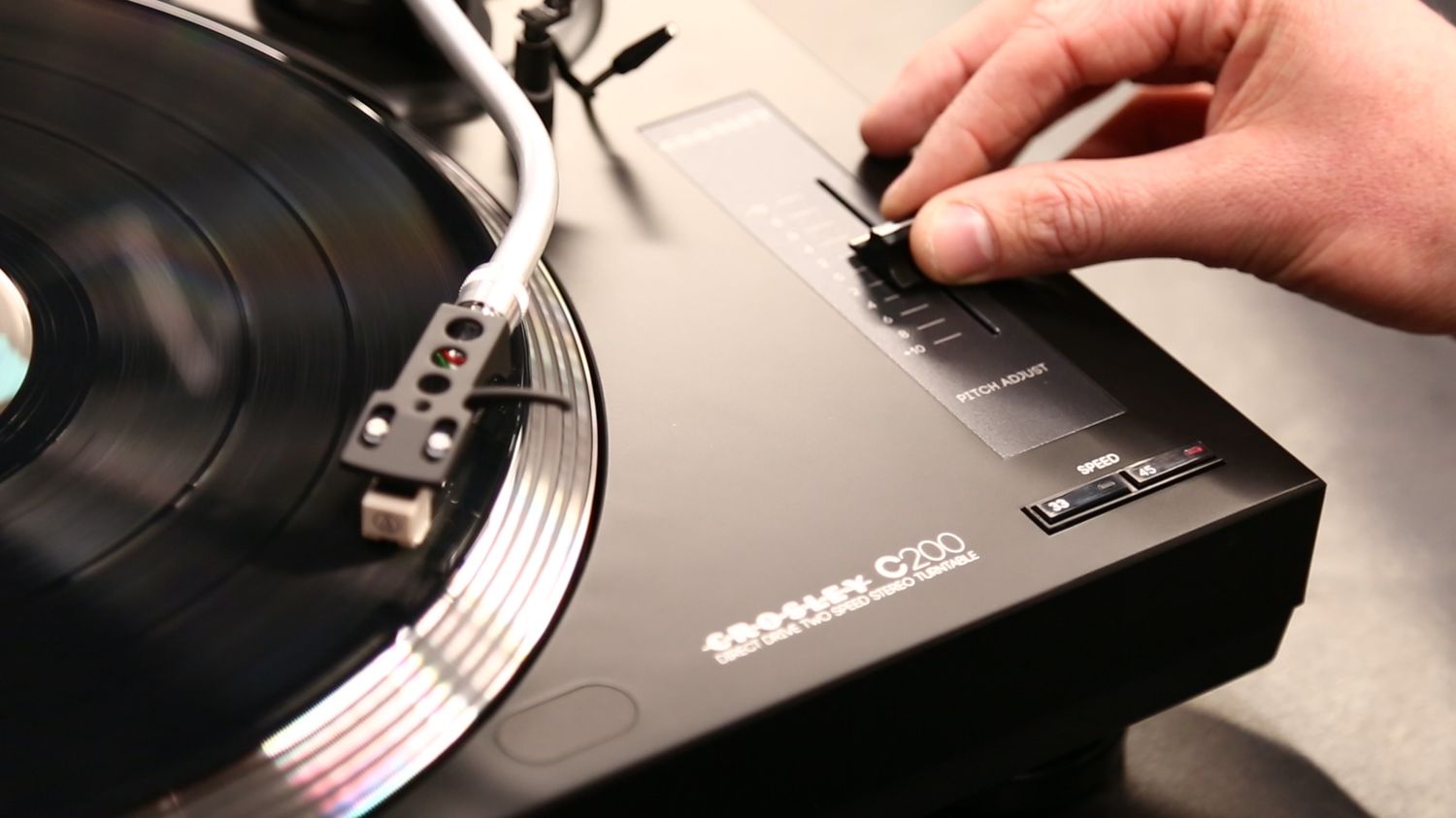

Turntable
Turntable Pitch Control What Does It Do
Published: January 18, 2024
Discover the power of turntable pitch control! Learn all about what it does and how it can enhance your audio experience.
(Many of the links in this article redirect to a specific reviewed product. Your purchase of these products through affiliate links helps to generate commission for AudioLover.com, at no extra cost. Learn more)
Table of Contents
Introduction
Welcome to the world of turntables! Whether you are new to vinyl or a seasoned audiophile, you may have heard of a unique feature called Turntable Pitch Control. This feature allows you to adjust the speed or pitch of your turntable, offering you a wide range of control over your listening experience.
Turntable Pitch Control has been a game changer in the world of vinyl, allowing DJs, musicians, and music enthusiasts to customize the playback speed of their records. But what exactly is it, and how does it work? In this article, we will explore the ins and outs of Turntable Pitch Control, its importance, benefits, and how to make the most of it.
So, whether you’re a purist who loves the original sound of vinyl or an adventurous listener looking to experiment with different speeds, this article is here to guide you and help you understand the magic behind Turntable Pitch Control.
What is Turntable Pitch Control?
Turntable Pitch Control is a feature found on most modern turntables that allows you to adjust the speed or pitch of your records. It gives you the ability to increase or decrease the rotational speed of the turntable’s platter, which directly affects the playback speed of the audio.
Traditionally, turntables played records at a fixed speed, usually 33 1/3 or 45 RPM (revolutions per minute), which corresponded to the standard speeds of LPs and singles. However, with the advent of Turntable Pitch Control, users gained the ability to deviate from these fixed speeds and explore a broader spectrum of playback possibilities.
Turntable Pitch Control typically offers a range of adjustment, allowing for fine-tuning of the playback speed. Depending on the turntable, the pitch control may range from +/- 8% to +/- 50% or even more. This wide range of adjustment gives users the freedom to experiment with different speeds, creating unique and creative listening experiences.
It’s important to note that Turntable Pitch Control affects both the speed and pitch of the audio. By increasing the speed, the music will play faster, and the pitch will also be higher. Conversely, decreasing the speed will slow down the music and lower the pitch. This means you can not only customize the playback speed but also manipulate the pitch to add a personal touch to your listening experience.
With the rise in popularity of digital audio production and DJing, Turntable Pitch Control has become an essential tool for DJs and musicians. It allows them to match the tempo of different songs, seamlessly transition between tracks, and even create unique remixes by altering the pitch and speed of samples.
But Turntable Pitch Control is not limited to DJs and musicians. It also offers benefits for casual listeners who want more control over their listening experience. Whether you want to slow down a fast-paced song to capture every nuance or speed up a slow ballad to add some energy, Turntable Pitch Control empowers you to tailor the music to your preferences.
How does Turntable Pitch Control work?
Turntable Pitch Control operates through a mechanism that adjusts the rotational speed of the turntable’s platter. The platter is the circular surface on which the record sits and spins. By modifying the rotational speed, the playback speed of the audio is subsequently altered.
The precise mechanism for Turntable Pitch Control may vary depending on the turntable model, but the general principle remains the same. Turntables typically use a synchronous motor, which means that the speed of the motor is synchronized to the frequency of the power supply to maintain a consistent rotation speed.
To change the playback speed, the turntable adjusts the frequency of the voltage supplied to the motor. By increasing or decreasing the frequency, the motor spins faster or slower, respectively. This, in turn, affects the rotational speed of the platter and consequently the playback speed of the record.
Most turntables with Pitch Control feature a dedicated control knob or slider. Moving the control towards the “+” symbol increases the frequency and speeds up the motor, resulting in a faster playback speed. Conversely, moving the control towards the “-” symbol decreases the frequency and slows down the motor, resulting in a slower playback speed.
It’s important to note that Turntable Pitch Control should be used with caution to avoid excessive speed adjustments that could potentially damage the motor or cause skipping. It’s always recommended to make gradual adjustments and listen carefully to the playback to ensure optimal sound quality and performance.
In addition to the physical mechanism of Turntable Pitch Control, some modern turntables also offer digital pitch control. This allows for even more precise adjustments to the playback speed, often with a wider range of pitch control options. Digital pitch control is typically implemented through specialized circuitry that digitally alters the audio signal before it reaches the amplifier.
Overall, Turntable Pitch Control offers a versatile and intuitive way to fine-tune the playback speed of your records. Whether you’re looking to match the tempo of different songs, create unique remixes, or simply explore new sonic possibilities, Turntable Pitch Control gives you the power to customize your listening experience.
Importance of Turntable Pitch Control
Turntable Pitch Control holds significant importance in the world of vinyl and music listening for several reasons. Let’s explore why this feature is highly valued by DJs, musicians, and music enthusiasts alike:
1. Flexibility and Creativity: Turntable Pitch Control allows for a wide range of speed adjustment, offering unparalleled flexibility and creativity in music playback. DJs can seamlessly blend songs of different tempos, create smooth transitions between tracks, and experiment with unique mixes. Musicians can play along with records at their preferred speed, making it easier to practice and perform alongside their favorite music.
2. Customized Listening Experience: Every individual has their own preferences when it comes to music. Turntable Pitch Control empowers listeners to customize their listening experience by adjusting the playback speed. Whether you want to slow down a song to appreciate the subtleties or speed it up to add energy, Turntable Pitch Control gives you the ability to tailor the music according to your mood and preferences.
3. Remixing and Production: For DJs, producers, and musicians, Turntable Pitch Control is an invaluable tool for remixing and production. It enables them to manipulate the pitch and speed of samples and loops, allowing for creative experimentation and the creation of unique remixes. This feature has revolutionized the art of DJing and music production, offering endless creative possibilities.
4. Tempo Matching: One of the key benefits of Turntable Pitch Control is the ability to match the tempo of different songs. DJs can seamlessly transition between tracks with different speeds, maintaining a consistent groove on the dancefloor. It also allows for harmonious blends and smooth mixes, enhancing the overall listening experience for both DJs and their audience.
5. Learning and Transcribing: Turntable Pitch Control is especially beneficial for musicians who want to learn or transcribe songs. By adjusting the speed of the record, musicians can slow down complex passages, making it easier to analyze and learn intricate guitar solos, drum patterns, or vocal melodies. It is a valuable tool for music education and skill development.
Overall, Turntable Pitch Control plays a pivotal role in elevating the vinyl listening experience. Whether you’re a DJ aiming to create seamless mixes, a musician looking to practice alongside your favorite tracks, or simply a music enthusiast wanting to personalize your listening experience, Turntable Pitch Control offers unparalleled flexibility, creativity, and customization options.
Advantages and Benefits of Turntable Pitch Control
Turntable Pitch Control offers numerous advantages and benefits that enhance the listening experience and empower DJs, musicians, and music enthusiasts. Let’s explore some of the key advantages:
- Customizable Speed: One of the primary benefits of Turntable Pitch Control is the ability to customize the speed of playback. Whether you want to speed up a slow ballad or slow down an energetic dance track, Turntable Pitch Control allows for precise adjustments, catering to your preferences and creative needs.
- Seamless Mixing: DJs heavily rely on Turntable Pitch Control to seamlessly mix tracks with different tempos. By matching the speeds of songs, DJs can create smooth transitions, flawless blends, and maintain a consistent groove on the dancefloor. This feature enables DJs to showcase their skills and create memorable performances.
- Remixing Possibilities: Turntable Pitch Control opens up a world of remixing possibilities. DJs and producers can manipulate the pitch and speed of samples and loops, creating unique remixes and mashups. This feature allows for creative experimentation, enabling artists to put their own spin on existing tracks and create something entirely new.
- Learning Tool: For musicians, Turntable Pitch Control serves as a valuable learning tool. It allows for slow playback of songs, making it easier to transcribe intricate parts, learn complex solos, and practice alongside professional recordings. This feature aids in skill development and musical growth.
- Enhanced Music Appreciation: With Turntable Pitch Control, music enthusiasts can truly appreciate the details and nuances of their favorite songs. Slowing down the playback speed offers a deeper understanding of the instrumentation, lyrics, and overall production. It allows listeners to immerse themselves in the music and experience it in a new light.
- Flexibility and Adaptability: Turntable Pitch Control provides flexibility and adaptability in various musical situations. Whether it’s adapting a track to match the tone and mood of a live performance or adjusting the speed to suit a particular genre or style, Turntable Pitch Control gives artists the freedom to tailor the music to their specific needs.
Overall, Turntable Pitch Control offers a wide range of advantages and benefits. From customizable speed to seamless mixing, remixing possibilities, learning tools, enhanced music appreciation, and adaptability in different musical scenarios, Turntable Pitch Control elevates the listening experience for DJs, musicians, and music enthusiasts alike. It’s an essential feature for those seeking to push the boundaries of creativity and create memorable musical moments.
Common Misconceptions about Turntable Pitch Control
While Turntable Pitch Control is a fascinating feature that offers a world of possibilities, there are some common misconceptions surrounding its use. Let’s debunk these misconceptions and provide clarity:
- 1. Sacrificing Sound Quality: One common misconception is that using Turntable Pitch Control will result in a loss of sound quality. However, this is not necessarily true. Modern turntables are designed to maintain excellent sound reproduction, even when adjusting the playback speed. While extreme speed adjustments may introduce some artifacts or affect the tonal characteristics, subtle adjustments within reasonable limits typically have minimal impact on sound quality.
- 2. Limited to DJs and Musicians: Another misconception is that Turntable Pitch Control is only relevant for DJs and musicians. However, this feature provides benefits to all music listeners. Whether you want to customize your listening experience or explore the nuances of your favorite songs, Turntable Pitch Control offers a versatile tool for enhancing your enjoyment of music.
- 3. Difficulty in Operating: Some people may believe that using Turntable Pitch Control is complicated or requires advanced technical knowledge. However, most turntables with this feature have intuitive controls that are easy to use. It’s simply a matter of adjusting a knob or slider to modify the speed. With a little practice and experimentation, anyone can become comfortable using Turntable Pitch Control.
- 4. Incompatible with Analog Records: There is a misconception that Turntable Pitch Control only works well with digital music files and is not suitable for analog records. In reality, Turntable Pitch Control is designed to work with both analog records and digital files. It allows for precise adjustments of the playback speed, regardless of the format of the music source.
- 5. Promoting Incorrect Playback: Some people worry that using Turntable Pitch Control could result in incorrect playback or alter the intended artistic vision of the music. While it is true that adjusting the speed can impact the pitch and overall character of the recording, it is ultimately up to the individual listener to decide how they want to experience the music. Turntable Pitch Control offers the freedom to personalize the listening experience without inherently promoting incorrect playback.
It’s important to note that while Turntable Pitch Control offers a range of possibilities, it should be used responsibly. Extreme speed adjustments or excessively altering the pitch can lead to distorted sound or damaged records. It’s always recommended to make gradual adjustments and listen attentively to ensure optimal sound quality and preserve the longevity of your records.
By clearing up these common misconceptions, we can appreciate the true value and versatility of Turntable Pitch Control. It is a tool that enhances our ability to enjoy and engage with music, offering a more personalized and immersive listening experience.
Tips for Using Turntable Pitch Control Effectively
Using Turntable Pitch Control effectively allows you to make the most out of this powerful feature. Here are some tips to help you maximize your experience:
- 1. Gradual Adjustments: When using Turntable Pitch Control, make gradual adjustments to the speed. Sudden and extreme changes can result in distorted sound quality or even damage to your records. Take your time to find the perfect speed that suits your preference without compromising on the integrity of the music.
- 2. Listen Closely: Pay close attention to the playback when making speed adjustments. Listen for any noticeable distortion or artifacts that may occur as you modify the pitch. This will help you find the sweet spot where the music sounds natural and maintains its intended quality.
- 3. Experiment with Different Genres: Don’t be afraid to experiment with Turntable Pitch Control across various genres of music. Different genres can benefit from different speed adjustments. For example, slowing down a fast-paced rock song can bring out the intricacies of the instrumentation, while speeding up a slow ballad can add a new energy and vibe.
- 4. Use Pitch Control in Moderation: While it can be tempting to constantly adjust the pitch during playback, it’s important to use Pitch Control in moderation. Constantly changing the speed can disrupt the flow of the music and hinder your listening experience. Allow the music to play naturally for a while before making any further adjustments.
- 5. Take note of Key Changes: When using Turntable Pitch Control, be aware that altering the speed will also change the pitch of the music. This is particularly important for DJs mixing songs together. Pay attention to the key changes that may occur and adjust accordingly to maintain a harmonious blend between tracks.
- 6. Take Care of Your Records: It’s essential to handle your records with care, especially when using Turntable Pitch Control. Be gentle when placing and removing the record from the turntable, and ensure that the records are clean and free from dust and debris. Regular cleaning and proper storage will help maintain the longevity and quality of your vinyl collection.
- 7. Familiarize Yourself with Your Turntable: Every turntable may have slightly different controls and capabilities when it comes to Pitch Control. Take the time to read the user manual and familiarize yourself with the specific features and limitations of your turntable. Understanding how your turntable operates will help you use Pitch Control more effectively.
By following these tips, you can effectively utilize Turntable Pitch Control to enhance your listening experience, whether you’re a DJ, musician, or casual listener. It allows you to unleash your creativity, customize your music, and explore new sonic possibilities. Remember to always prioritize the preservation of your records and listen attentively to ensure optimal sound quality.
Conclusion
Turntable Pitch Control is a remarkable feature that has revolutionized the world of vinyl and music listening. It offers the ability to adjust the speed or pitch of your turntable, providing a wide range of control over your listening experience. Whether you’re a DJ, musician, or music enthusiast, Turntable Pitch Control empowers you to customize your music playback, unleash your creativity, and explore new sonic dimensions.
Throughout this article, we’ve explored what Turntable Pitch Control is and how it works. We’ve also highlighted the importance of this feature, such as its flexibility and creativity, seamless mixing capabilities, remixing possibilities, and its role as a valuable learning tool for musicians.
Additionally, we’ve debunked common misconceptions surrounding Turntable Pitch Control, such as concerns about sound quality or its limited relevance to certain individuals. It’s clear that Turntable Pitch Control offers numerous benefits to all music enthusiasts, allowing for personalized listening experiences and enhancing our appreciation of the music we love.
Finally, we provided tips for using Turntable Pitch Control effectively, including making gradual adjustments, listening closely for optimal sound quality, experimenting with different genres, and taking care of your records.
In conclusion, Turntable Pitch Control is an invaluable tool that adds depth, versatility, and personalization to your vinyl and music listening journey. Embrace the magic of Turntable Pitch Control, explore its possibilities, and let it enhance your audio experience in ways you never thought possible.


